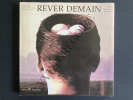-
Type
Book (431)
Engraving (2)
Magazine (4)
New book (1)
-
Latest
Last 3 days (1)
Last month (4)
-
Century
18th (1)
19th (103)
20th (102)
21st (12)
-
Countries
Belgium (14)
Brazil (1)
Denmark (17)
France (395)
Netherlands (5)
Switzerland (6)
-
Syndicate
CLAM (1)
ILAB (189)
NVVA (5)
SLAM (170)
SNCAO (2)
Accord des intérets dans l'association et besoins des communes.
Paris, Capelle, 1848. In-16 de 128-(1) pp., demi-maroquin rouge, dos orné à nerfs (reliure de l'époque).
Deuxième édition, améliorée et augmentée. Bel exemplaire. Del Bo p. 45.
LASCARIS ou LES GRECS AU QUINZIEME SIECLE, suivi d'un essai historique sur l'état de la Grèce actuelle ; d'un essai sur les romans grecs et de plusieurs morceaux de littérature sur Plutarque et ses ouvrages ; sur Tibère, sur l'empereur Julien, sur la vie et les ouvrages de Pope. - D'un fragment d'Hérodote. - et du discours prononcé à la réception de M. Fourier.
Paris, Didier, Libraire, 1837, troisième édition, superbe reliure pleine-basane racinée, décor à froids sur plats avec filet doré, fer doré "collège Royal de Bastia" au premier plat, dos lisse faux nerfs et titre dorés, tranches marbrées , 13x20,5 cm, 512 pages. Une carte dépliante de la Grèce en fin d'ouvrage.
Coins très légèrement émoussés léger manque de cuir sur bord supérieur du 4ème plat. Rousseurs. (photos par mail sur demande
YOLENE DILAS-LAURENT GERVEREAU-THIERRY PAQUOT
Reference : ABE-1663288101667
(1994)
ISBN : 9782841461080
REVER DEMAIN Utopies-Science Fiction-Cités Idéales
138 PAGES-26,8 CM X 26,3 CM-TOUT IRA MIEUX! 1800 1914: TRACER LE CHEMIN, EBAUCHE DES REVES PREMIERS CAUCHEMARS, LA "COMMUNAUTE" CONTRE LA VILLE?-LA SCIENCE TOTALITAIRE 1914 1945: ILLUSIONS ET DESILLUSIONS, OU LA SCIENCE DEVIENT FICTION, FONCTIONNALISME ET RATIONALISME-Y A-T-IL ENCORE UN AVENIR 1945 2000: LES GRANDS REFUS, LES GALAXIES A L'HEURE D'HIROSHIMA, CHANGER LA VILLE-RICHE ICONOGRAPHIE-RELIURE TOILEE AVEC JAQUETTE ILLUSTREE-TRES BEL EXEMPLAIRE-(100H)
EDITIONS ALTERNATIVES COUVERTURE RIGIDE ETAT TRES BON
"ØRSTED (OERSTED), H.C. & FOURIER, (JEAN BAPTISTE JOSEPH). - COINING THE WORD 'THERMO-ELECTRIC""
Reference : 45991
(1823)
Sur quelques nouvelles Expériences thermo-électriques faites par M. le Baron Fourier et M. Oersted.
Paris, Crochard, 1823. No wrappers. In: ""Annales de Chimie et de Physique, Par MM. Gay-Lussac et Arago."", tome 22 (Cahier 4), With titlepage to vol. 22. Pp. 337-444. (Entire issue offered). Oersted & Fourier's paper: pp. 375-389 and 1 folded engraved plate. showing apparatus used.
First appearance of this importent paper - which can bee seen as the precursor of OHM'S LAW - in which Ørsted explains the experiments he did together with Fourier on the thermo-electric effects discovered by Seebeck. They proved with different experiments, that the effect depended solely on the heating of the plates in the voltaic arrangements. Ørsted calls Seebech's observations ""the most beautiful of the discoveries which have as yet grown out of mine (his discovery of electromagnetism three years before)""""We learn from his letters that thet the experiments on which the paper was founded had taken him 3 weeks, a space of time which evidently much too short for the performance of the work" thus Ørsted himself points out a fundamental flaw in the experiments, but there has been no time to remedy it. The work is of interest, both by what has been gained through it, and by what does not plainly appear" in some of its results it is the precursor of Ohm's law and by its defects it shows how great was the feat of the actual discovery of this law.""(Kirstine Meyer).The offered issue contains further Poisson ""Sur le Phénomene des anneaux colorés"", pp. 337-347., Ørsted ""Sur le Multiplacateur électro-magnetique de M. Schweigger, et sur quelques applications qu'on en a faites"", pp. 358-365, Ampère ""Extrait d'une Lettre de M. Ampère à M. Faraday"", pp. 389-400.
Sur quelques nouvelles Expériences thermoélectriques faites par M. le Baron Fourier et M. Oersted. (Notice lue à l'Academie des Sciences par M. Oersted). - [COINING THE TERM ""THERMO-ELECTRICITY"" AND INVENTING THE ""THERMO-ELECTRICAL PILE""]
(Paris, Crochard, 1823). 8vo. Without wrappers as extracted from: ""Annales de Chimie et de Physique, Par MM. Gay-Lussac et Arago."", Vol. 22, pp. 375-389.
First appearance of this paper, revealing the results of experiments with the galvanic elements, using pairs of small antimony and bismuth bars welded in series, which Oersted performed together with Fourier during his visit to Paris. This constitutes the invention of the first thermo-electrical pile. Oersted and Fourier had found that heat had a significant effect upon the performance of the galvanic element. - ""Seebeck seems to have had another theory about this. However, I have experimented with the matter, and found the conjecture correct. I believe that this discovery will be of far-reaching consequence. The laws for this new effects are, I suppose, in reality the same as for the galvanic battery"" yet this looks so different that I have been obliged to spend a great deal of my time during the last fortnight in discovering and defining them..."". In a letter of somewhat later date to prince Christian, he states that he has made the experiments ""in conjunction with Fourier, the secretary of the mathematical department of the Institute"". Oersted, when reading this paper to the Academy on 31st of March 1823, proposed the name ""thermo-electric"" for these currents, a name which has since been adopted everywhere. Ronalds Catalogue p. 374. - Ørsted, Works II, p. 272. Stitched together with this paper is ""Extrait d'une Lettre de M. Ampere à M. Faraday"". Pp. 389-400. First printing. Dealing with electricity.
 Write to the booksellers
Write to the booksellers







